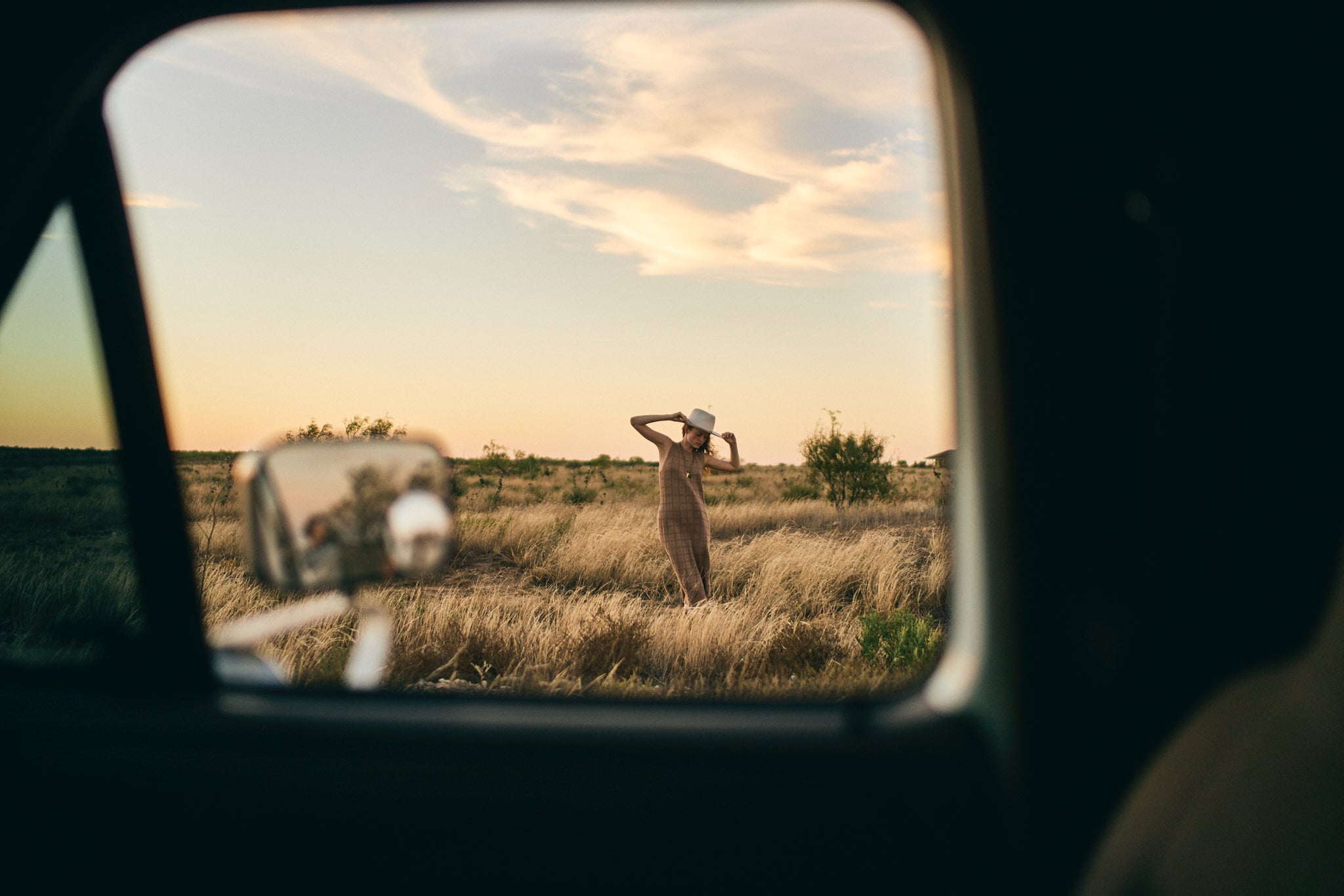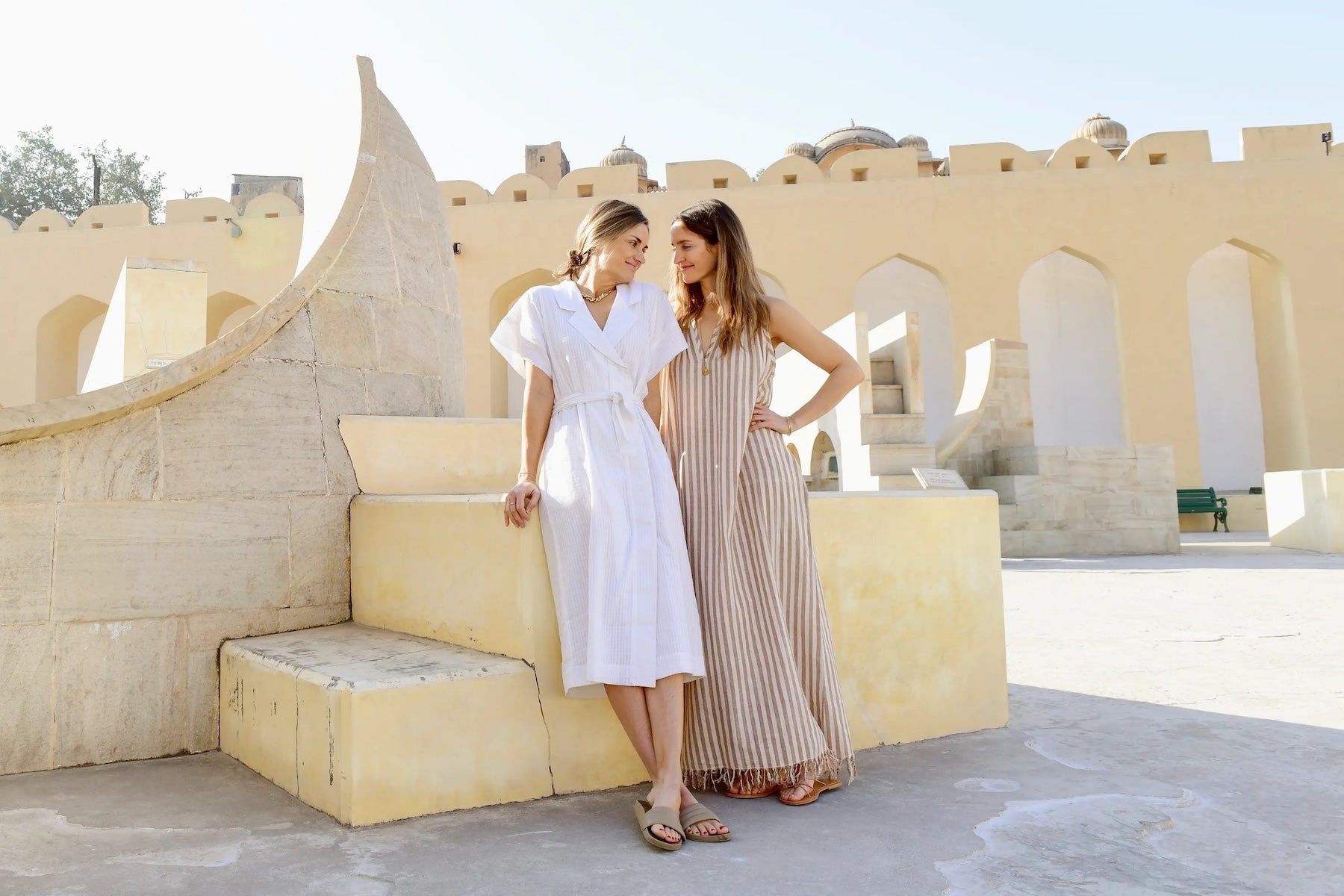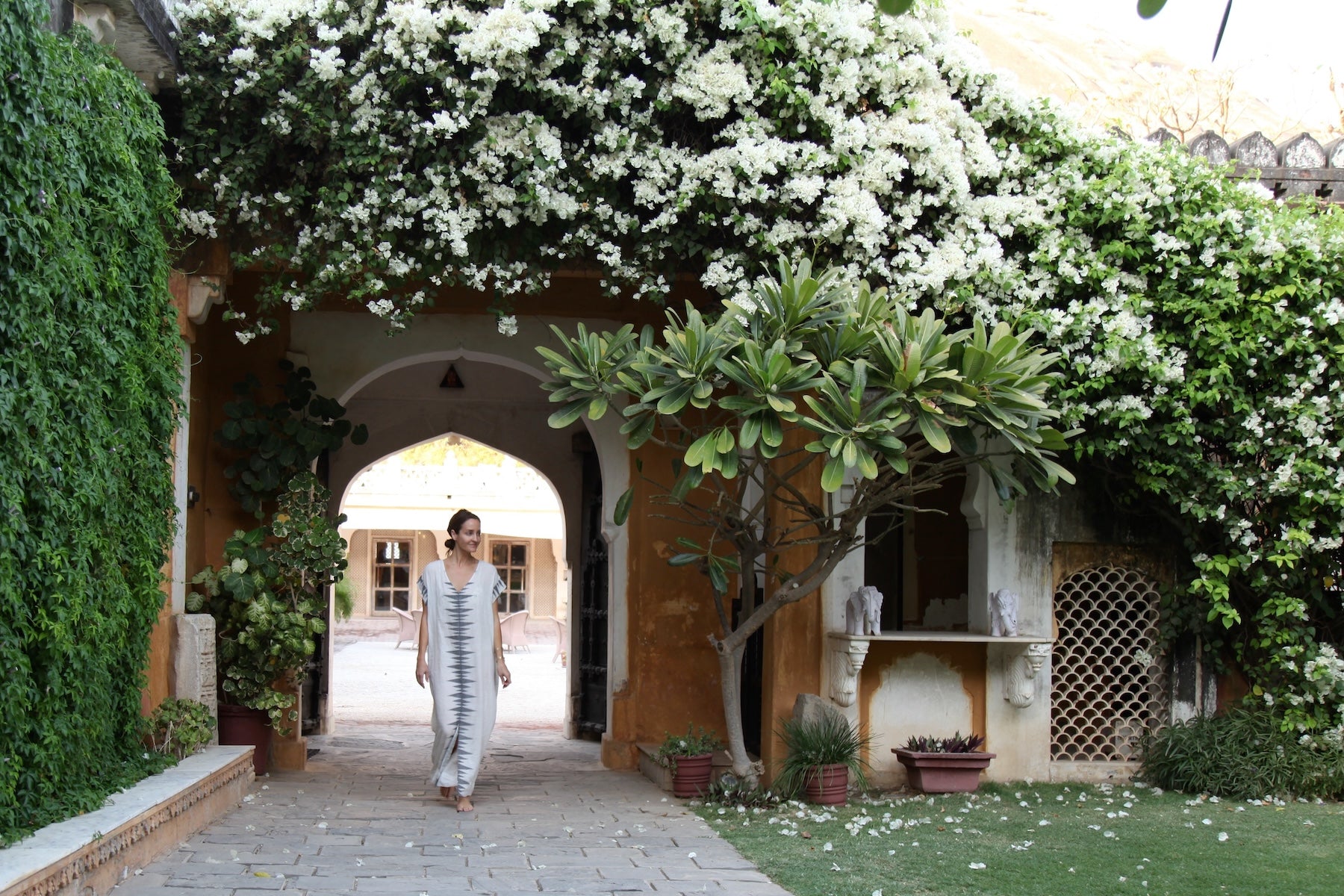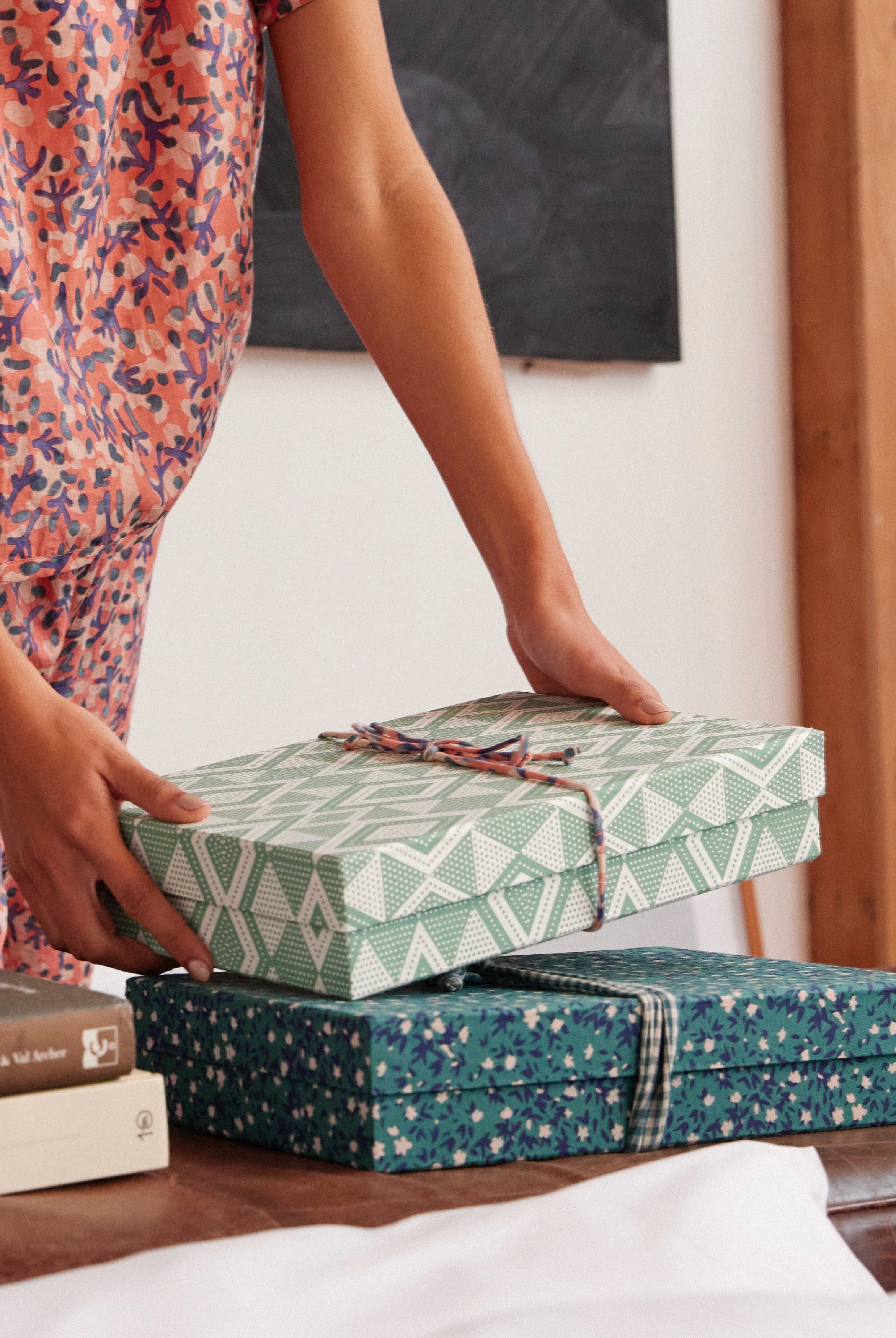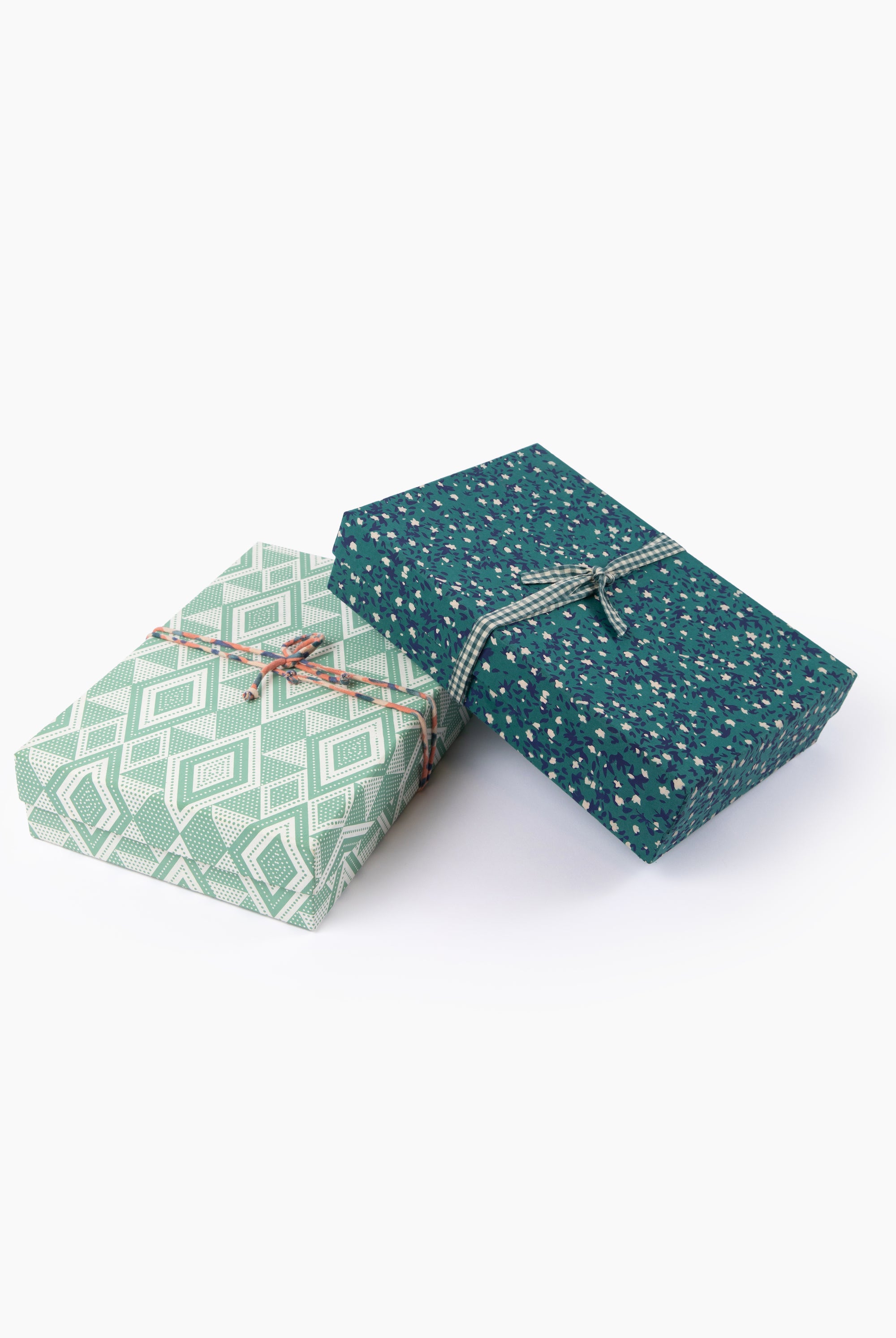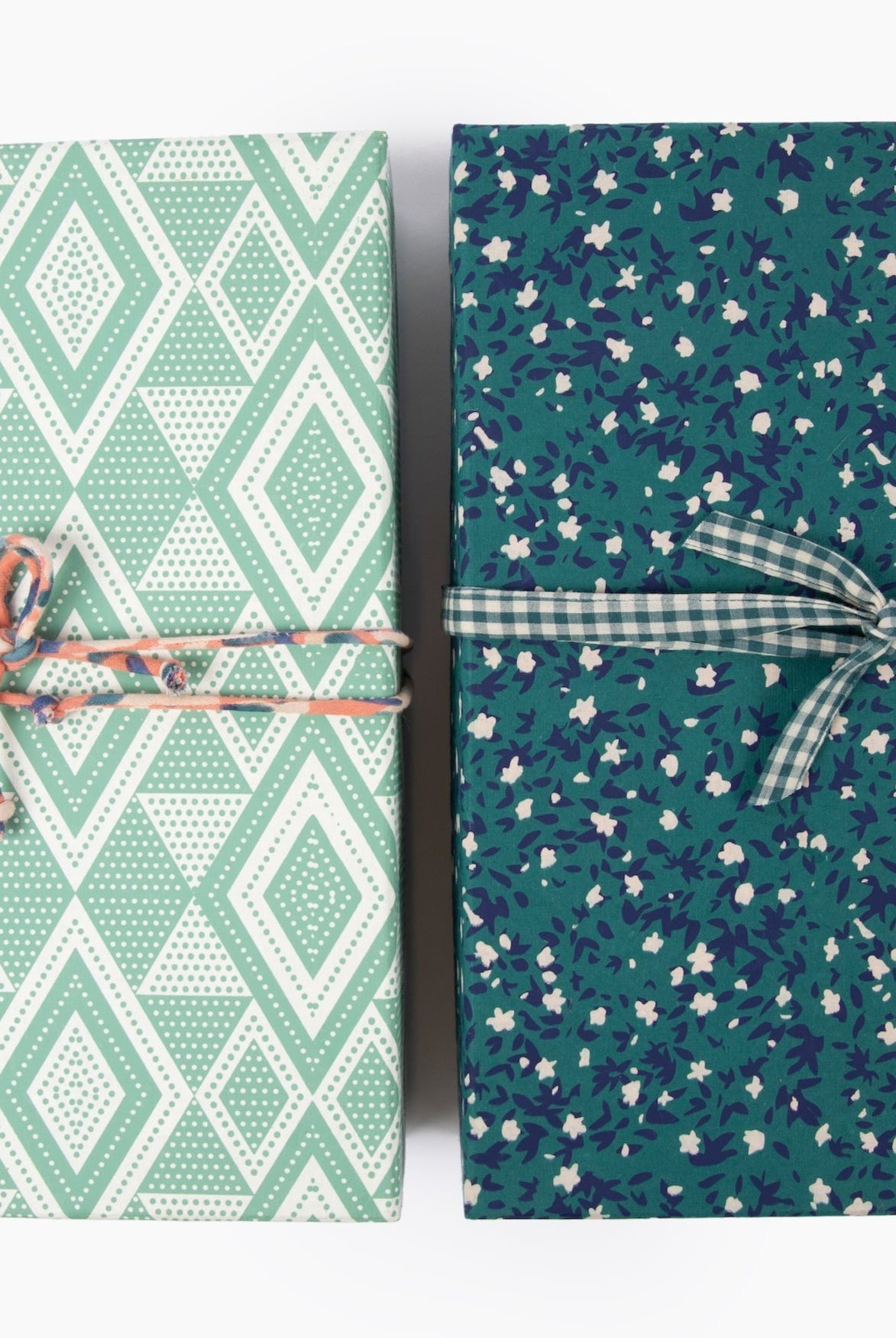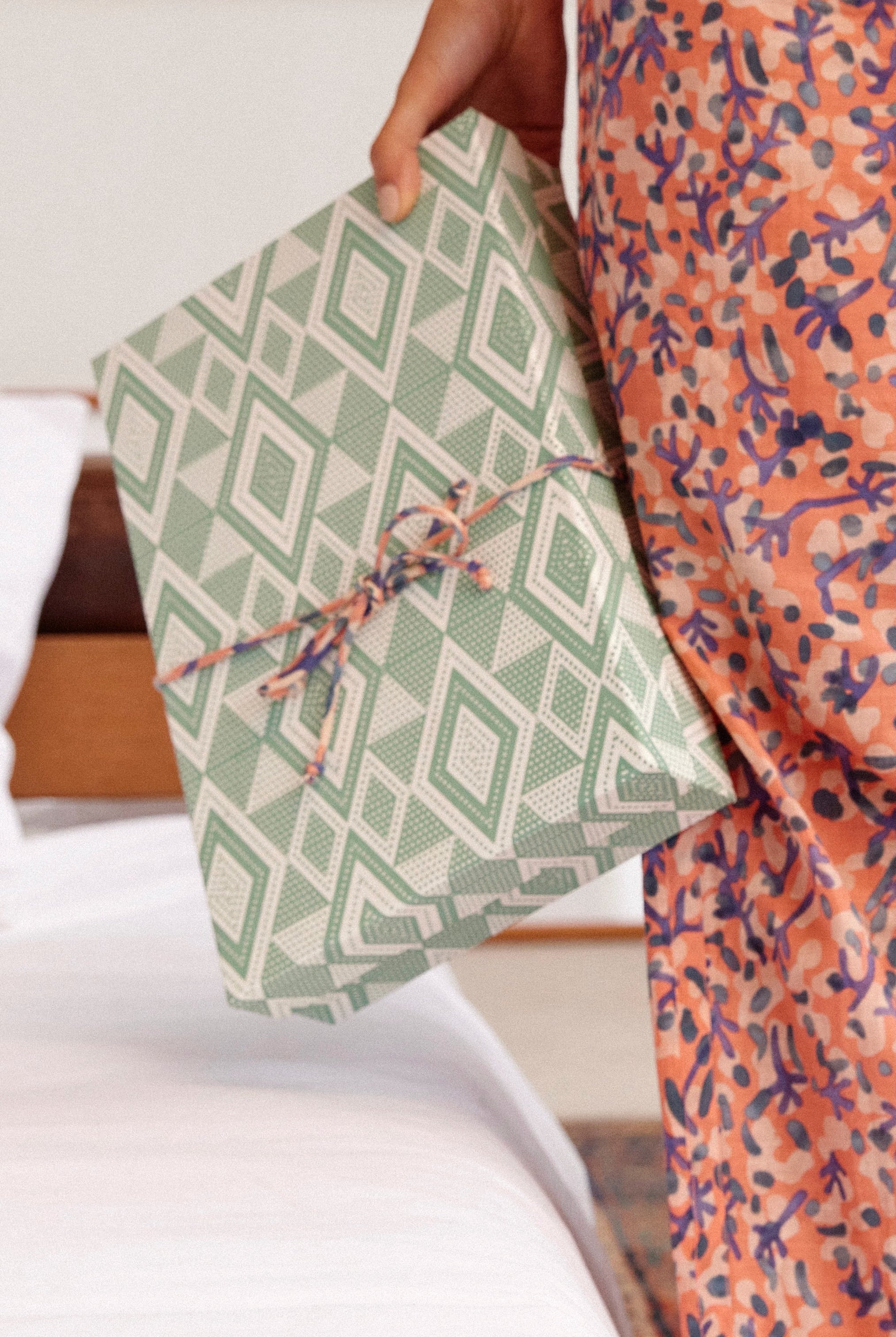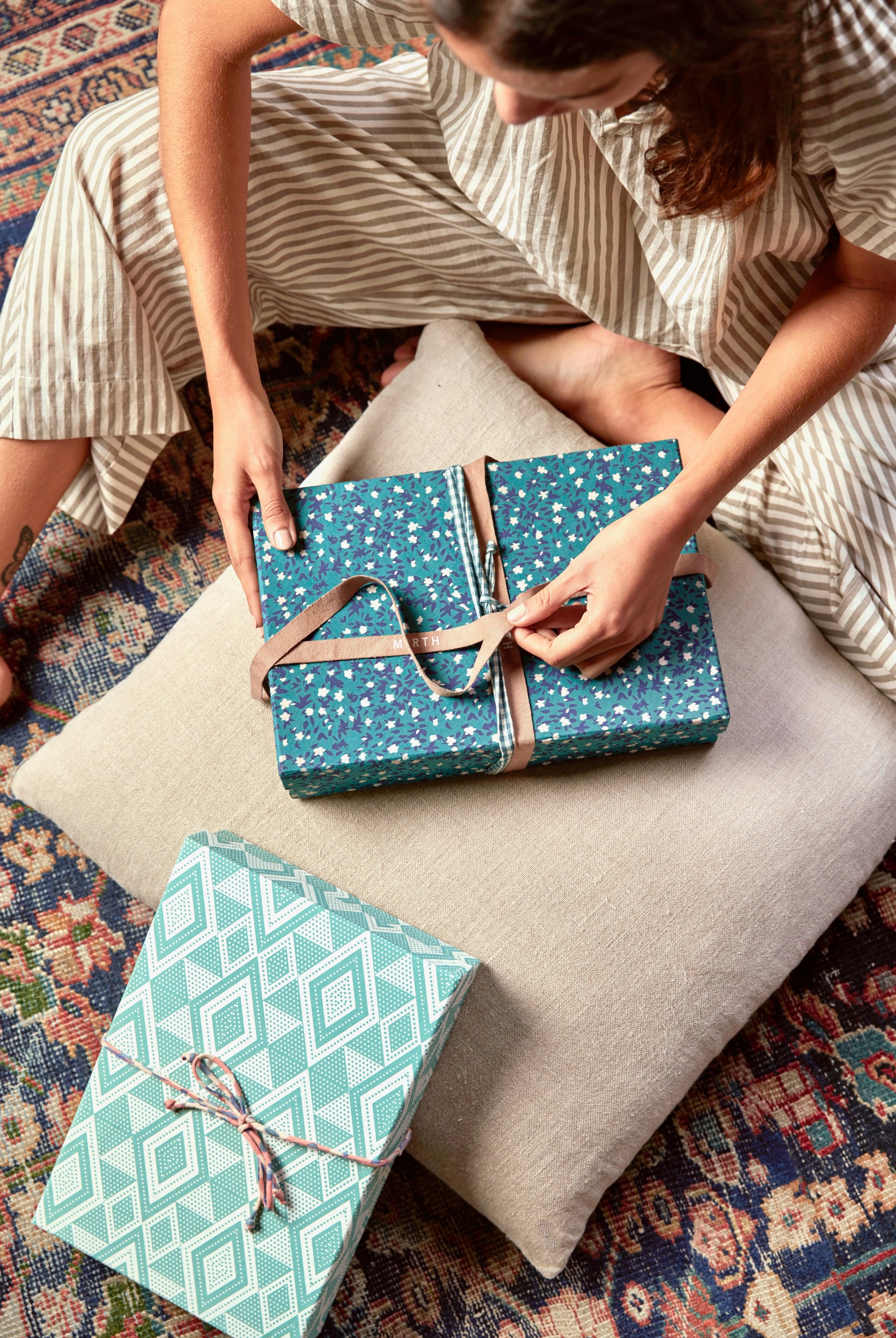lessons from deepak and ildeesh
***
deepak chhipa, the 4th generation block printer we work with, and his team welcomed us to the workshop in blazing heat holding the new blocks his colleague chiseled from our drawings sent the month before, and a palate of colors to begin mixing.



a new member of the family greeted us as well:
his new baby girl who we met for the first time.

but let's start from the beginning of the block printing process:
1
skilled carvers carve blocks out of a hunk of teak wood that has been soaked in oil to soften it by sight. they carve fine designs using nothing more than old fashioned chisels, a ruler and printout of a design.


mirth's holland print, used on the corfu and sconsett caftans
carvers work in their storefront in the printing quarter. walking down the street, you hear a constant "tap tap tap" to remind you of the work happening all around.

my favorite part of this walk around the printer's quarter:

snapping and sharing photos with these beautiful and colorful ladies


erin in the feather print caftan, sold out, but still available in california at anthropologie concept stores
2
depending on the style of printing, fabric is pretreated. all fabric is soaked to remove starches and sometimes dyed or bleached white.

harda dyeing happens next usually-- this is kind of like a primer that turns ivory when dried in the sun. harda is a natural substance made from the myrobalan nut.
3
we use azo free dyes in our products to achieve custom colors, and we occasionally use natural dyes. we plan to explore these natural dyes more and more. we've used natural dyes in our spring 2017 collection "bagru" print (coming in march!). we love the natural gray tone and even love how it varies from lot to lot, which is always the case with natural dyes.

bagru black is a soft black with a bit of a red tint, made from fermented syahi, which is usually horseshoes soaked with sugar cane and water. bagru gray is the natural state of the fabric after washing in the water, affected by alum. it varies from batch to batch, is more of a beige/gray and is always beautiful.

a few of the natural substances deepak uses in the printing process: dahura flowers, harda and alum
we worked on some discharge prints while in bagru, meaning the fabric is first dyed, then the "blockprint" removes the dye where it is stamped. to dye the base layer, we visited a dye house.

the dye house in bagru
we wanted a natural gray base and a midnight blue base. once dyed,
we would then print with a paste that removes the color-- resulting in a white/cream print on the fabric.

the color is mixed by sight and tested before dying the full amount.
we had lots of interested bystanders while waiting for the fabric.

bamboo structures at the dye house:

usually strung with long lengths of dyed fabric drying in the sun
4
once dyes for the print are mixed, they are prepared for printing in a wood container lined with layers of fabric. the number of layers of fabric determines the saturation of the print on the fabric. think of this as a stamp pad with more or less sponge.


ildeesh prepping a tray with dye
5
fabrics are spread across long tables and pinned to the edges.

every printing workshop is filled to the brim with blocks. hundreds, if not thousands, line the walls and fill space under the tables. it might appear a mess sometimes, but the printers know exactly where to find a block just based on a description.

printing begins. as hard as we try, the alignment and pressure is very difficult to perfect, especially consistently. watching a printer speed through an entire length without hesitation, hammering each block with their fist for an even print.


katie (in the kathmandu caftan, available at select stores november 1) and ildeesh,
after a day of new print designing

a master printer demonstrating mud resist, a style of printing using mud and sand
6
once printed, the fabric is far from finished. it is left in the dirt to dry in the jaipur sun for several days.


erin and ildeesh with our new print for spring 2017 aptly named the "ildeesh" print.
we print 2 layers of fabric and only use the bottom layer for a more faded result.
but we have plans to repurpose the top layer, don't worry
during monsoon, printing stops. when the air is wet and the drying process isn't just so, nature can't play its proper role. colors aren't the same, prints run, and the dyes don't set. so the printers wait until the sun comes out again and the air dries before printing commences.

7
fabric is then washed in a boiling cauldron with flowers from a native tree to set the dyes before drying again in the sun. deepak's dad-- i believe he is over 90-- comes to work everyday and sits on his chair on the stone structure above the cauldron. after getting the fire going underneath the cauldron, he grabs his long wooden stick, drops the fabric into the cauldron and stirs and stirs. we wonder, how many times has he done this in his life?


when your caftan arrives on your doorstep, look at it closely. the drip on the hem is from ildeesh's block during a gust of wind, the color that is a bit richer because it was humid the day they dye was mixed, the spec on the shoulder is a bit of dirt from the field it dried in and the gap in color is just because.

now that you know the story behind it and where it has been, don't you love it even more? we have some new prints that came together in bagru we are so in love with. they will debut in the spring 2017 collection. hang tight, it will be here soon!




